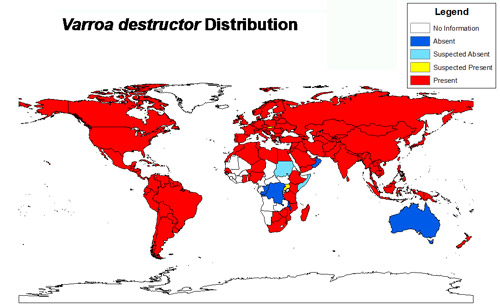There are quite much research about tolerancy againts varroa. NO research mention that "humidity" thing, except that one reaseach in tropic.
The basic is Natural Hygienic Behaviour, where 6 genes are known to affect.
Abstract 2010
Honeybee hygienic behaviour provides colonies with protection from many pathogens and is an important model system of the genetics of a complex behaviour. It is a textbook example of complex behaviour under simple genetic control:
hygienic behaviour consists of two components
-uncapping a diseased brood cell,
- followed by removal of the contents-
-each of which are thought to be modulated independently by a few loci of medium to large effect.
A worker's genetic propensity to engage in hygienic tasks affects the intensity of the stimulus required before she initiates the behaviour. Genetic diversity within colonies leads to task specialization among workers, with a minority of workers performing the majority of nest-cleaning tasks. We identify three quantitative trait loci that influence the likelihood that workers will engage in hygienic behaviour and account for up to 30% of the phenotypic variability in hygienic behaviour in our population. Furthermore, we identify two loci that influence the likelihood that a worker will perform uncapping behaviour only, and one locus that influences removal behaviour. We report the first candidate genes associated with engaging in hygienic behaviour, including four genes involved in olfaction, learning and social behaviour, and one gene involved in circadian locomotion. These candidates will allow molecular characterization of this distinctive behavioural mode of disease resistance, as well as providing the opportunity for marker-assisted selection for this commercially significant trait.
http://www.ncbi.nlm.nih.gov/pubmed/20298472
.






